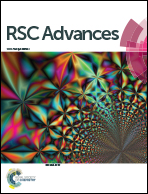Composites of poly(lactic) acid/thermoplastic polyurethane/mica with compatibilizer: morphology, miscibility and interphase
Abstract
Composites of poly(lactic) acid (PLA)/thermoplastic polyurethane (TPU)/mica were prepared by using a twin-screw extruder (TSE). Mica modified by a silicate coupling agent and/or a titanate coupling agent was incorporated into the PLA/TPU blends to investigate the influences of compatibilizers on nanophase morphology and interphase behaviors. The microstructure morphology of the composites was examined by high-resolution scanning electronic microscopy (SEM) and transmission electron microscopy (TEM). The observation indicates that the dispersed phase was homogeneously dispersed, and mica particles could effectively cut off PLA and/or TPU dispersion phase by melt-compounding. The dynamic mechanical properties of the composites were analyzed by using dynamic mechanical analysis (DMA), which confirms that the addition of modified mica strongly influences the miscibility of the multiphase composites. Effective modification in the surface of mica was detected by using Fourier transform infrared spectroscopy (FTIR). Slight reduction in the cold-crystallization temperature and crystallinity of the composites was observed with the modified mica addition under differential scanning calorimetry (DSC).


 Please wait while we load your content...
Please wait while we load your content...